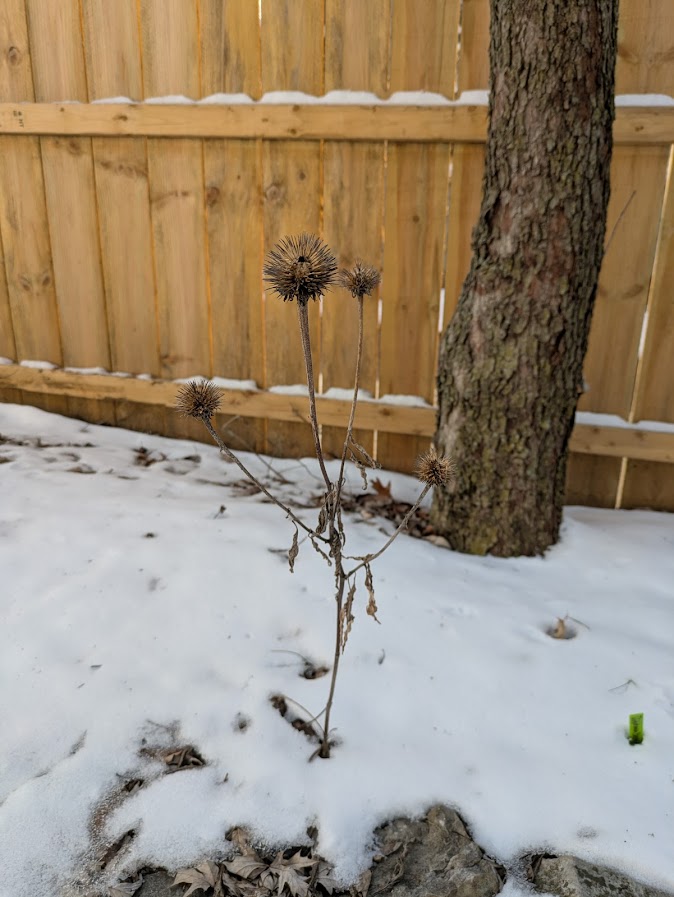
I enjoy taking photos of my garden at all times of the year, but the winter is an especially interesting season. Conventional thinking is that this is when everything is “dead” and resting while it waits for spring, but when we think of the ecosystem benefits of native plant gardening, the action doesn’t stop with snow and freezing temperatures.
To achieve these benefits, however, we need to begin to rethink a lot of ingrained “traditional” gardening practices such as garden cleanup. This is happening for more and more gardeners due to the newfound urgency of many larger environmental issues: from pollinator declines to climate change, and the realization that we can play a role to help even on our own garden however small.
Of course a tidy and cleaned-up garden demonstrates hard work and attention to detail which communicate a respect for your property and especially its aesthetics.
But there are several reasons why you should leave your stems and stalks in place in the fall and through the winter.
Benefits of Leaving Native Plant Stems Standing in Winter
Leaving your stems in place through winter provides cover and habitat for a variety of wildlife large and small during the cold winter months.
Many native insects and bees overwinter in hollow stems, so leaving them is crucial for allowing those species to complete their life cycle (and some will provide food for birds along the way to support the food chain.)
Natural Winter Birdfeeders with Native Plants
And many native plants also keep their seedheads deep into winter and those seeds are a favorite of a variety of bird species including goldfinches that are always a fun sight to see in the garden.
Winter is the most difficult season for birds to survive, and an abundant native plant garden is even more beneficial than any type of store-bought bird feeder.
Overall, these stems may not be “beautiful” in the same sense as a colorful flower or lush foliage, but they are attractive in their own right and add much more interest than a garden bed that has been cleared of all plant material.
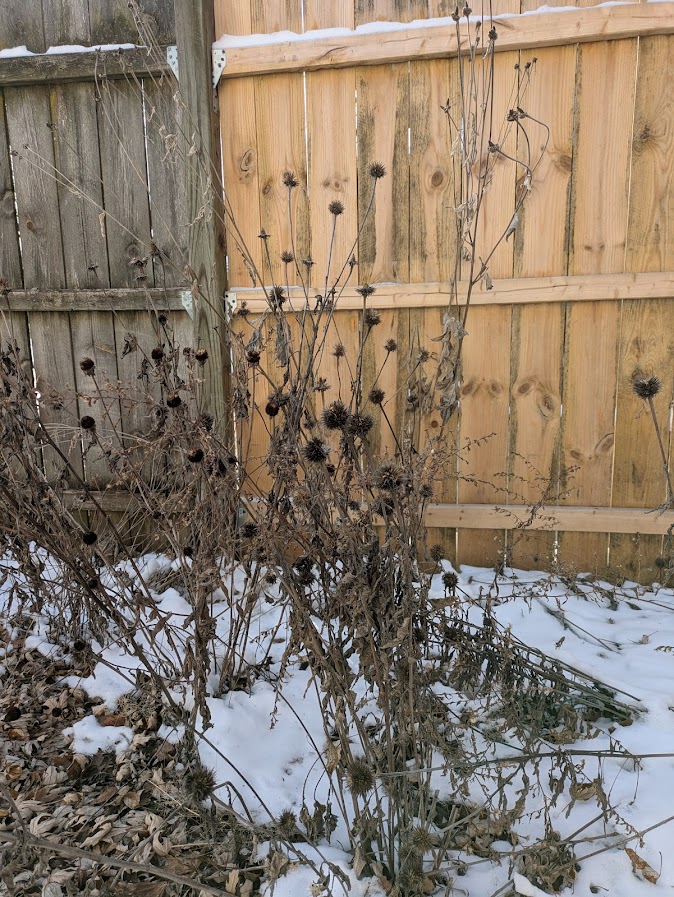
“Cues to Care” in the Winter Native Plant Garden
An important concept for native plant gardening in suburban or HOA environments is “cues to care,” which means utilizing indicators that the landscape is intentional and being cared for, even ones that are quite small or subtle. Some of these cues are traditionally things that don’t go well with native gardening, like adding large amounts of colored mulch in large spaces between plants, and cleaning up dead plants after the growing seasons.
But there are others that you can do which don’t negatively affect your garden’s ecosystem value but can help show your neighbors (and municipality) that you are making intentional choices and not neglecting your property.
In general, defining garden areas with borders, either edging or mowed paths through your garden that are visible from the street, is a great way to
And you can also utilize some elements of layering so your taller plants are in a back row with shorter growth below. And in the winter garden, this can mean maintaining taller stems in somewhat organized clusters rather than totally random heights scattered about the yard.
Finally, a great cue to care is a sign mentioning that it is a native pollinator garden and explaining some of its benefits, which are readily available from a variety of organizations.
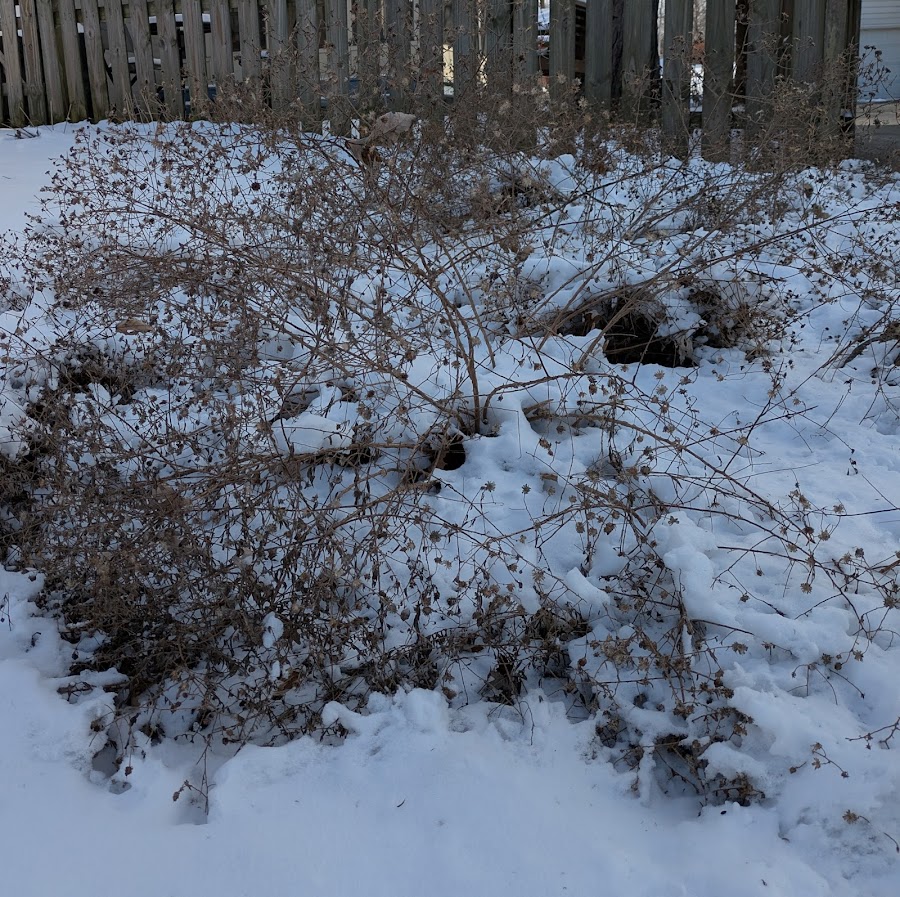
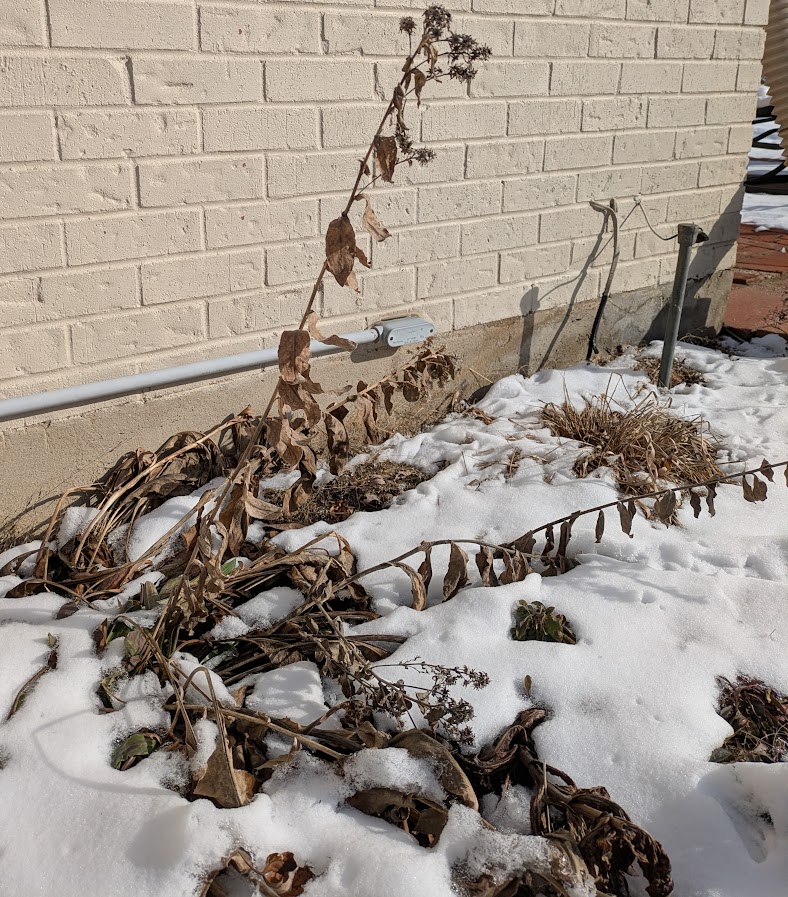
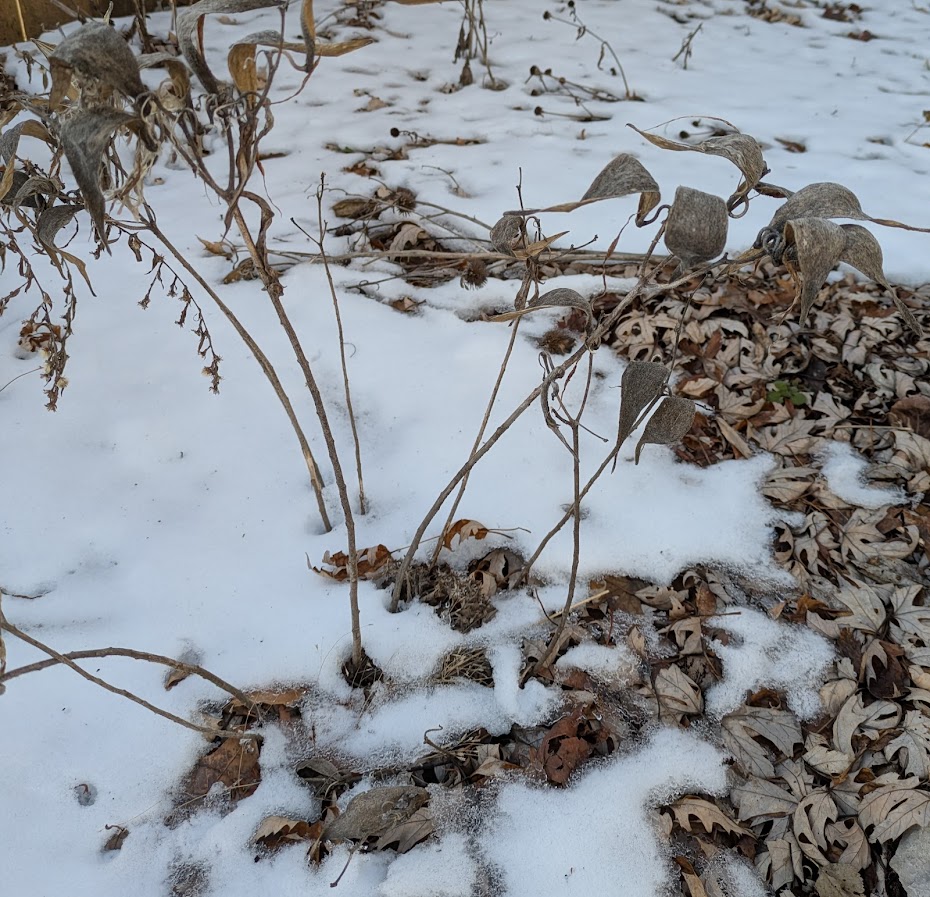
Leaving the Leaves (And Can Native Plants Grow Through Them in Spring?)
Closely related to the idea of leaving stems is to resist the urge to rake (or much worse, use an environmentally-awful gas leaf blower) the leaves away from your garden beds and lawn and send them to a landfill. A leaf layer (I don’t like the connotations of the common term “leaf litter”) is also crucial overwintering habitat for a variety of insects and also serves as a natural mulch which adds nutrients to your soil as the leaves break down.
So it’s a great habit to leave your leaves through the winter.
Some native plant gardeners take this philosophy a bit too far, however, and oppose any removal of leaves, believing it to be a natural process that native plants have adapted to and can easily overcome when emerging in the spring.
But it’s important to draw a distinction between shade plants that for the most part will indeed be able to pop up through the leaf layer, and prairie and meadow plants whose natural habitat does not typically have many leaves. These perennials, especially if they are younger, will struggle or be unable to poke through the leaves, often which get densely packed down in a typical yard garden environment due to factors that are very unlike what they would see in the wild.
So a good compromise is to remove leaves that may have blown into areas where you have sun-loving and prairie plants, but keep them on your property and transfer them to another part of your yard.
We hope this article has inspired you to postpone that garden cleanup until pollinators have had a chance to emerge in the spring. If you have any questions or comments, let us know in the comments.
Leave a Reply